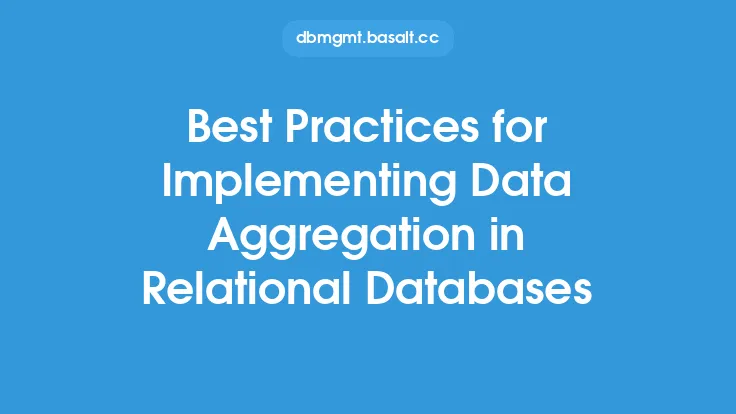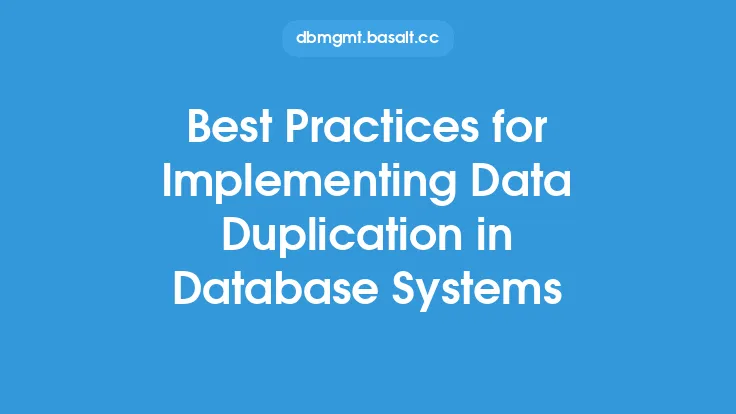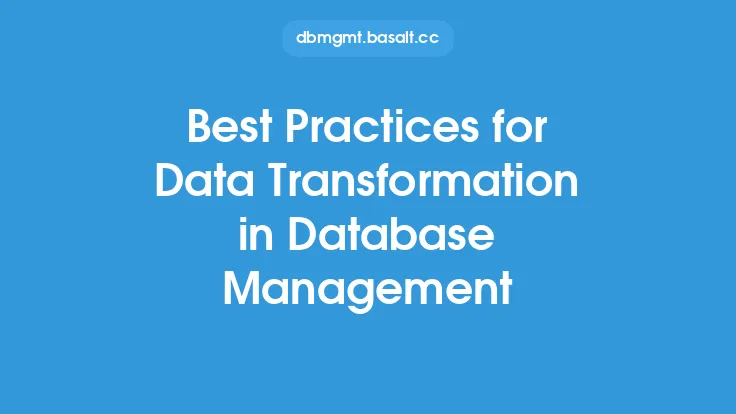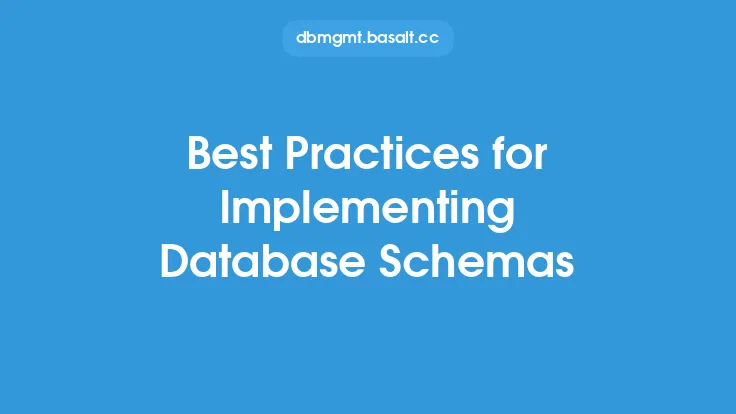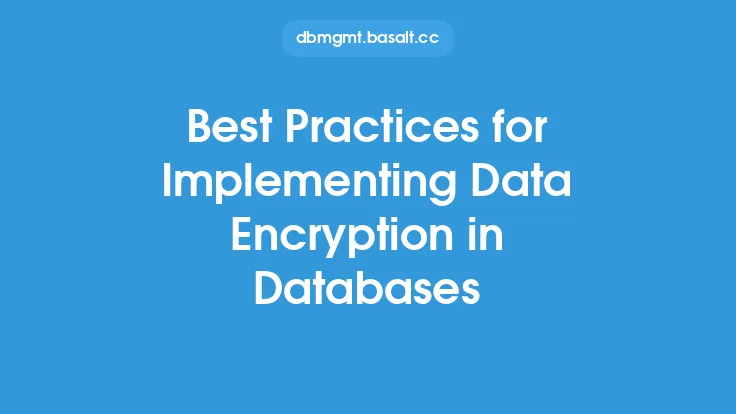Implementing data aggregation in a database is a crucial step in extracting valuable insights from large datasets. Data aggregation involves collecting and summarizing data from multiple sources, allowing users to analyze and understand complex data relationships. To ensure effective data aggregation, it is essential to follow best practices that promote data consistency, accuracy, and scalability. In this article, we will delve into the key considerations and techniques for implementing data aggregation in a database, providing a comprehensive guide for database administrators and data analysts.
Understanding Data Aggregation Requirements
Before implementing data aggregation, it is vital to understand the requirements and goals of the project. This involves identifying the types of data to be aggregated, the frequency of aggregation, and the level of granularity required. Database administrators must also consider the data sources, data formats, and data volumes to ensure that the aggregation process can handle the data complexity. Additionally, understanding the query patterns and user requirements will help in designing an efficient data aggregation strategy.
Designing the Data Aggregation Framework
A well-designed data aggregation framework is critical to ensuring data consistency and accuracy. This involves creating a data model that defines the relationships between different data entities and specifies the aggregation rules. The framework should also include data validation and data cleansing mechanisms to ensure that the aggregated data is accurate and reliable. Furthermore, the framework should be scalable to handle increasing data volumes and user queries. A modular design approach can help in building a flexible and maintainable data aggregation framework.
Choosing the Right Data Aggregation Techniques
There are various data aggregation techniques available, including rollup, cube, and grouping sets. Each technique has its strengths and weaknesses, and the choice of technique depends on the specific use case and data requirements. Rollup aggregation is suitable for hierarchical data, while cube aggregation is ideal for multidimensional data. Grouping sets, on the other hand, provide a flexible way to aggregate data based on multiple criteria. Database administrators should carefully evaluate the data aggregation techniques and choose the one that best fits their needs.
Implementing Data Aggregation Using SQL
SQL (Structured Query Language) is a powerful language for implementing data aggregation in a database. SQL provides various aggregation functions, such as SUM, AVG, MAX, and MIN, which can be used to calculate aggregated values. Additionally, SQL supports grouping and filtering operations, which enable users to aggregate data based on specific conditions. Database administrators can use SQL to create views, stored procedures, and user-defined functions to implement data aggregation logic. However, they should be aware of the performance implications of complex SQL queries and optimize them accordingly.
Optimizing Data Aggregation Performance
Data aggregation can be a resource-intensive process, especially when dealing with large datasets. To optimize data aggregation performance, database administrators should consider indexing, caching, and materialized views. Indexing can improve query performance by reducing the number of rows to be scanned. Caching can help in reducing the number of queries executed against the database, while materialized views can store pre-aggregated data, reducing the computational overhead. Additionally, database administrators should monitor query performance and adjust the data aggregation strategy as needed.
Ensuring Data Consistency and Accuracy
Data consistency and accuracy are critical aspects of data aggregation. Database administrators should implement data validation and data cleansing mechanisms to ensure that the aggregated data is accurate and reliable. This involves checking for data inconsistencies, handling missing values, and performing data normalization. Additionally, database administrators should establish data governance policies to ensure that data aggregation is performed consistently across the organization.
Scalability and Maintenance Considerations
Data aggregation frameworks should be designed to scale with increasing data volumes and user queries. Database administrators should consider using distributed databases, parallel processing, and cloud-based services to improve scalability. Additionally, they should establish maintenance routines to ensure that the data aggregation framework remains up-to-date and performs optimally. This involves monitoring query performance, updating statistics, and rebuilding indexes as needed.
Security and Access Control Considerations
Data aggregation involves collecting and summarizing sensitive data, which requires careful consideration of security and access control. Database administrators should implement robust security measures, such as encryption, access control, and auditing, to protect the aggregated data. Additionally, they should establish role-based access control to ensure that only authorized users can access the aggregated data.
Conclusion
Implementing data aggregation in a database requires careful consideration of various factors, including data requirements, framework design, technique selection, and performance optimization. By following best practices and using the right techniques, database administrators can create a scalable and maintainable data aggregation framework that provides accurate and reliable insights. As data volumes continue to grow, the importance of data aggregation will only increase, making it essential for organizations to invest in a well-designed data aggregation strategy. By doing so, they can unlock the full potential of their data and make informed decisions to drive business success.
